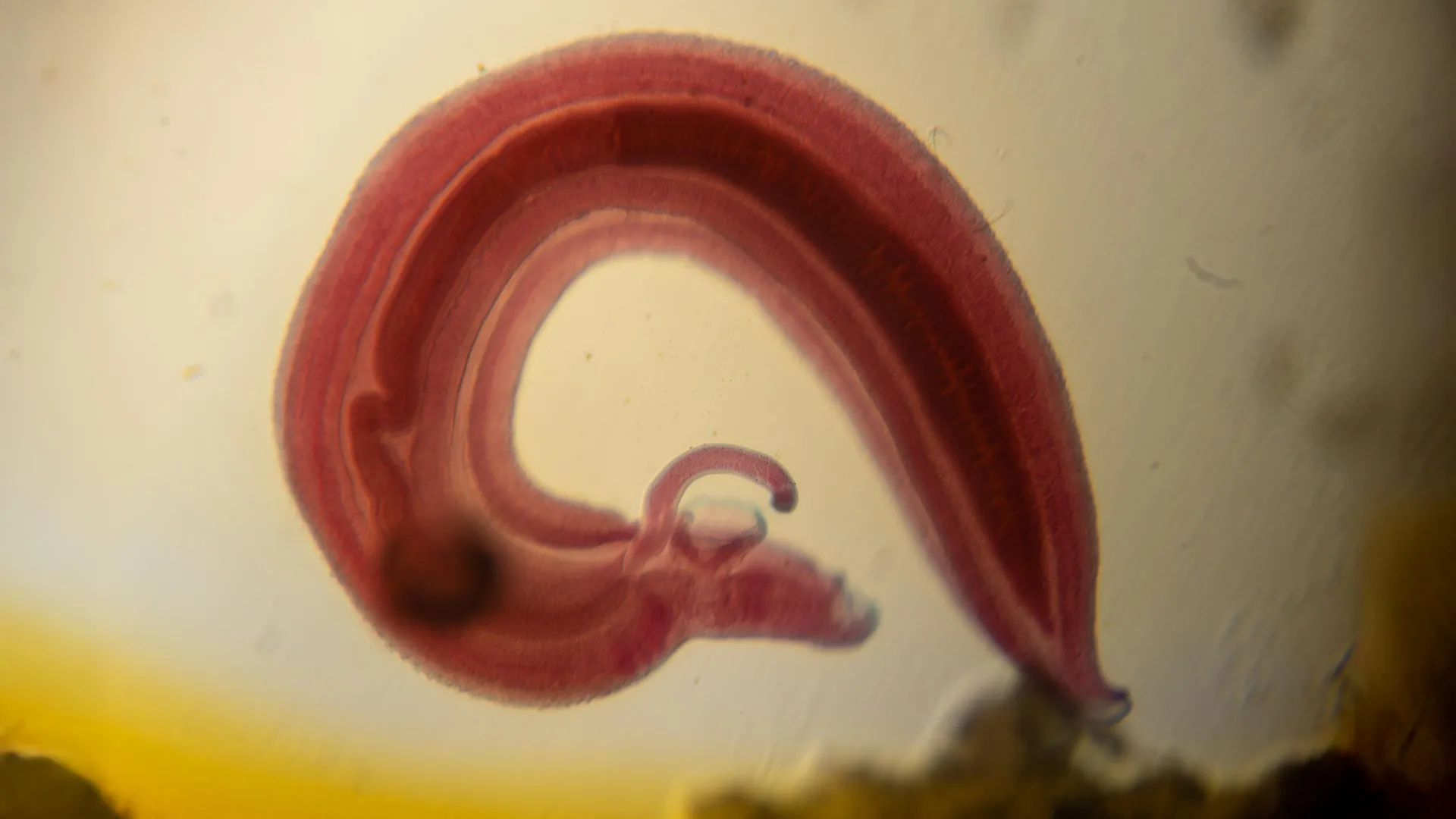The parasite that turns off your body’s pain alarm and sneaks in
- Date:
- August 12, 2025
- Source:
- American Association of Immunologists Inc
- Summary:
- Scientists have discovered a parasite that can sneak into your skin without you feeling a thing. The worm, Schistosoma mansoni, has evolved a way to switch off the body’s pain and itch signals, letting it invade undetected. By blocking certain nerve pathways, it avoids triggering the immune system’s alarms. This stealth tactic not only helps the worm survive, but could inspire new kinds of pain treatments and even preventative creams to protect people from infection.
- Share:

New research, published in The Journal of Immunology, discovered that a parasitic worm suppresses neurons in the skin to evade detection. The researchers suggest that the worm likely evolved this mechanism to enhance its own survival, and that the discovery of the molecules responsible for the suppression could aid in the development of new painkillers.
Schistosomiasis is a parasitic infection caused by helminths, a type of worm. Infection occurs during contact with infested water through activities like swimming, washing clothes, and fishing, when larvae penetrate the skin. Surprisingly, the worm often evades detection by the immune system, unlike other bacteria or parasites that typically cause pain, itching, or rashes.
In this new study, researchers from Tulane School of Medicine aimed to find out why the parasitic worm Schistosoma mansoni doesn't cause pain or itching when it penetrates the skin. Their findings show that S. mansoni causes a reduction in the activity of TRPV1+, a protein that sends signals the brain interprets as heat, pain, or itching. As part of pain-sensing in sensory neurons, TRPV1+ regulates immune responses in many scenarios such as infection, allergy, cancer, autoimmunity, and even hair growth.
The researchers found that S. mansoni produces molecules that suppress TRPV1+ to block signals from being sent to the brain, allowing S. mansoni to infect the skin largely undetected. It is likely S. mansoni evolved the molecules that block TRPV1+ to enhance its survival.
"If we identify and isolate the molecules used by helminths to block TRPV1+ activation, it may present a novel alternative to current opioid-based treatments for reducing pain," said Dr. De'Broski R. Herbert, Professor of Immunology at Tulane School of Medicine, who led the study. "The molecules that block TRPV1+ could also be developed into therapeutics that reduce disease severity for individuals suffering from painful inflammatory conditions."
The study also found that TRPV1+ is necessary for initiating host protection against S. mansoni. TRPV1+ activation leads to the rapid mobilization of immune cells, including gd T cells, monocytes, and neutrophils, that induce inflammation. This inflammation plays a crucial role in host resistance to the larval entry into the skin. These findings highlight the importance of neurons that sense pain and itching in successful immune responses
"Identifying the molecules in S. mansoni that block TRPV1+ could inform preventive treatments for schistosomiasis. We envision a topical agent which activates TRPV1+ to prevent infection from contaminated water for individuals at risk of acquiring S. mansoni," said Dr. Herbert.
In this study, mice were infected with S. mansoi and evaluated for their sensitivity to pain as well as the role of TRPV1+ in preventing infection. Researchers next plan to identify the nature of the secreted or surface-associated helminth molecules that are responsible for blocking TRPV1+ activity and specific gd T cell subsets that are responsible for immune responses. The researchers also seek to further understand the neurons that helminths have evolved to suppress.
Story Source:
Materials provided by American Association of Immunologists Inc. Note: Content may be edited for style and length.
Journal Reference:
- Juan M Inclan-Rico, Adriana Stephenson, Camila M Napuri, Heather L Rossi, Li-Yin Hung, Christopher F Pastore, Wenqin Luo, De’Broski R Herbert. TRPV1 neurons promote cutaneous immunity against Schistosoma mansoni. The Journal of Immunology, 7 August 2025 DOI: 10.1093/jimmun/vkaf141
Cite This Page: